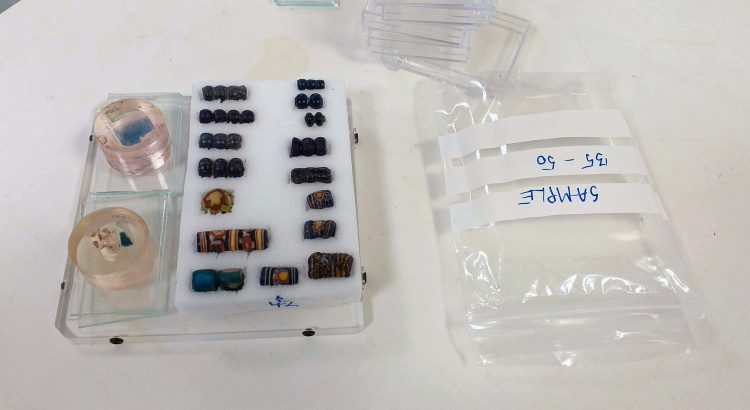Glass Networks: Tracing Early Medieval Long-Distance Trade, c. 800–1000 CE
This recent project has analysed early medieval glass beads with chemical and archaeological methods, in order to develop a novel perspective on European long-distance trade networks and interconnectedness. Early medieval raw glass production mainly took place in Mediterranean and Near Eastern centres. Each produced glass with distinct chemical compositions, which was circulated to various regions, including Europe. Small-scale raw glass production also existed in north-western Europe. While the study of glass in the Mediterranean has received considerable attention, the potential of glass circulation networks to transform our understanding of trade and communication routes in Europe has yet to be fully utilised.
A major theme in the study of early medieval Europe, and specifically in the study of early medieval long-distance trade, has been the existence and nature of connections between the Mediterranean world and north-western Europe in this period. However, neither the glass evidence, nor the role of (east-)central Europe have been considered in detail in this context. As much of the early medieval glass used in north-western Europe originated in the Mediterranean, glass represents an ideal medium for studying these connections. But, while studies of the chemical compositions of early medieval glass from the Mediterranean and north-western Europe are available, these two regions have not been linked together by data from those areas that lie in between. Therefore, we have very limited information about the routes on which early medieval glass, and by implication a whole range of less visible Mediterranean materials, reached north-western Europe.
This project has investigated glass beads, with archaeological and scientific methods, from central Europe (Austria, Hungary, and the Czech Republic), along the long-distance trade route postulated in this region, and will combine this new data with available results on glass from the Mediterranean and north-western Europe, in order to link these territories, and trace Europe-wide distribution networks. The project has been funded by the Leverhulme Trust (RPG-2018-224).

Photo by Szabina Merva


